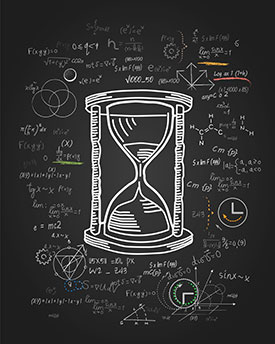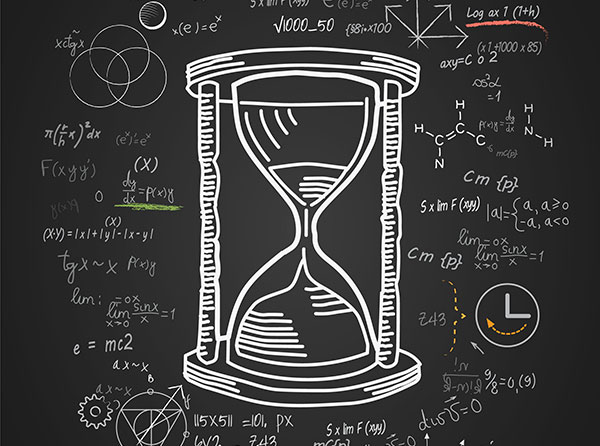 Kenneth Johnson joins me in the 30th episode of the show in order to talk about some of the ancient timing techniques that are used in the Hellenistic and Indian astrological traditions.
Kenneth Johnson joins me in the 30th episode of the show in order to talk about some of the ancient timing techniques that are used in the Hellenistic and Indian astrological traditions.
During the course of the show we have a general discussion about time-lord and dasha systems in the east and west, how these techniques were used and conceptualized, and what their implications are for contemporary astrological practice.
Kenneth has been a practitioner of Indian astrology for 30 years, and has a strong background in Hellenistic astrology as well, which makes him uniquely qualified for cross-cultural comparisons.
Find out more information about Kenneth’s work at KennethJohnsonAstrology.com.
Episode Outline
Here is an outline of the topics we touched on during the course of the episode:
- Ancient astrologers had a collection of timing techniques that worked differently than modern techniques.
- While transits are often the first technique in modern, in ancient they were the last.
- A transit won’t coincide with a hit unless it is activated in the time-lord systems.
- Natal placements lie dormant until awakened.
- Modern western techniques tend to be either about real time astronomical events (transits), or directing/progressing planets (secondary progressions, solar arcs).
- Ancient timing techniques tend to be more symbolic, and more focused on activating specific planets or signs for longer durations of time, via planetary periods.
- Looking at spans of times rather than just specific days when something will be exact.
- The end result is dividing a person’s life up until chapters and paragraphs.
- In the Hellenistic tradition they called them chronocrator or time-lord systems.
- In Indian astrology they refer to them as dasha systems.
- Many based on planetary periods.
- Periods that are either astronomical, symbolic, or numerological.
- Hellenistic time-lord systems:
- Basic: Annual Profections
- Advanced: Zodiacal Releasing
- Indian dasha systems:
- Vimshottari dasha
- Kalachakra dasha
- In the 2012 presidential elections many of the Indian astrologers made similar predictions because they were all using the vimshottari dasha system.
- Led to greater consensus because they all had a base technique to start from.
- Reintroducing these systems into modern astrology.
- Improvements and complications that come with this.
- Ethical and philosophical issues, as well as technical.
- Time-lord and dasha systems are established or predefined from the moment of birth.
- Raises some philosophical questions about how predetermined things are.
Transcript
A full transcript of this episode is available: Episode 30 transcript
Download or Stream the Podcast
You can either download this episode of the podcast as an MP3 or you can play it directly from the website by using the buttons below:
Podcast: Play in new window | Download (Duration: 1:05:43 — 30.3MB)


Great podcast! You guys are really getting into it. Neat how the ancient guys and gals took both the Sun and the Moon in relation to the earth moving through the constellations and came up with such an amazing system. The “Zoo” diac signs and Nakshatras use together are just as amazing and both compliment each other so well in my opinion.
The Vimshottari dasa system is based/calculated from the natal Nakshatra of the natal Moon which is called the Janma Nakshatra. The dasa sequence is calculated from the Moon`s Nakshatra at the time of a person`s birth. Let`s say if your natal Moon is occupying the Nakshatra of Chitra at the time of birth, then since the Lord of the Star Chitra is Mars, that is where the calculation point starts from. So you will be born into the Mars dasa cycle which last for 7 years and Mars will be the Maha (Main) dasa lord for those 7 years and the other Grahas/planets will all have turns as sub-lords holding various degrees of rank throughout the 7 years cycle. It is complicated math and also teaches us about ourselves when we take time to learn how it is calculated, odd how math and astronomy can such a thing.
Commonly the Maha, Antar and Pratyantar dasa lords, which are the first three lords are enough to make a worthwhile prediction. The dasa cycles basically show how our individual karmas/life unfolds and the most commonly used is the Vimshottari system which is a Moon based system dealing heavily with our consciousness, our psychology and feelings about our life experiences. It can be used alone to make accurate predictions, but it is also commonly used hand in hand with the Jaimini Sign based dasa systems, which are based on calculations taken from the movements of the Sun and the earth. The Jaimini Sign based dasa system also uses 5 levels, but with signs not planets as the lords. Jaimini Sign based dasa show concrete manifestation of events indicated by the sign(s) represented from level one to five in the dasa scheme. Sign based dasa`s show whether events occur or not and how and why these things happen.
In both systems some main points of consideration are the natural karakas (what the planets naturally represent), the chara (changeable) karakas, which are specific to the each individual based on the chart). Vimshottari focus on the planets as house lords and their position in the natal chart and the house cusps they influence. so results are considered from these places and also the interactions/aspects and joining of planets, including the current transits as related to the natal birth chart. The Jaimini sign based dasa use the both types of karakas (natural and changeable), the bhava cusps inside of the sign(s) and also any pada “feet” that lands inside of the sign. The padas are the “feet” of the rasis. Kind of like how our minds experiences life and so our feet move because of our minds reactions/actions to the life we experience. Argala and other strength factors based factors of signs/houses are used to determine which events occur. Sign/Rasi aspects, which are not the same as planetary aspects are used to indicate the nature of how events/karmas will manifest themselves using the natural qualities of the Grahas/Planets Sign/Rasi aspecting the Sign(s) in question.
You guys may also like the Jaimini system and its use of padas and argala. There is a different Rasi dasa for every aspect of life just like the divisional harmonic charts used in vedic astrology, which also cover every aspect of life. I have only been able to afford one of three Jaimini classes so far so there is much more depth to both systems. Hopefully my post will give you all something to consider when you do your own research and studies. Thanks guys for sharing. I really enjoyed listening in!
Wow! That was great! Mr. Johnson is a great guest. Very impressive and knowledgeable with a sober perspective on intriguing concepts in astrology. I remember his 1st appearance on the podcast quite well. Please DO an episode on traditional philosophic views in astrology on fate and determinism! The West sorely needs it!